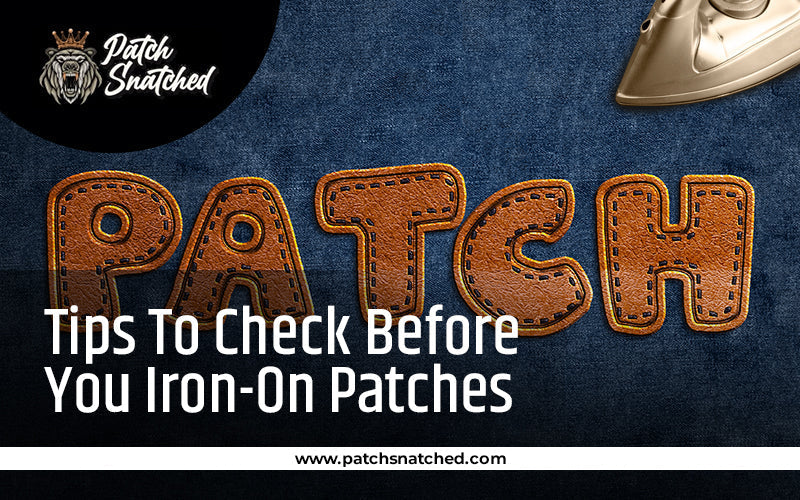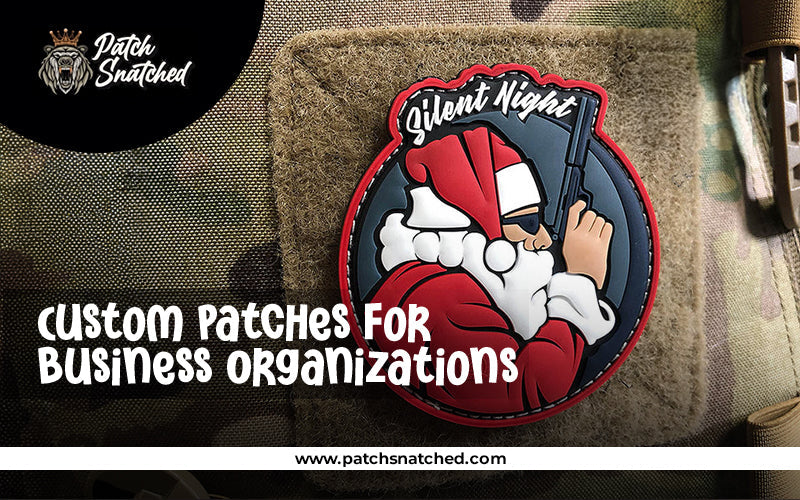
Tips to Check Before You Iron On Patches
Your custom patches are here, and you are excited to use them on your favourite items. But there is just one problem —- you’re not sure how to iron them properly onto the surface. No worries, you are alone! Too many people around the world are not familiar with the process. Fortunately, this guide will help you find the best methods to iron your patches efficiently and effectively. So sit back and relax! Without any further due,
Preparation is The Key
Always check on the fabric that you are trying to iron on, never iron on rubber patches, because it can deform the molecules of the patch, basically you dont want to heat rubber do you?
Then what about denim and cotton?
Yes, Cotton is perfect for ironing. The custom fabric patches from patch Snatched offer a great advantage if you want to iron them. Cotton patches are easily ironable and keep the temperature somewhere in the vicinity of 120 degrees Celsius. Similarly, denim, a combination of cotton and other materials like lycra or polyester, can be ironed using similar metrics.
“A handful of patches come with adhesive coating, and can be sticked to surfaces or garments”.
Embroidery patches are among the easiest to stick to fabrics. During manufacturing, a thin plastic layer is applied to the back to reinforce the stitching, making it easier to iron when finished.
Usually, embroidered custom patches are thicker and better due to the layers of thread, plus the plastic and the adhesive on top. The adhesive must be melted with enough heat to permeate these layers and guarantee a solid bind. Avoid overheating, though, since this could burn the threads, harm the backing, or even destroy the cloth on which the patch is applied.
The best temperature to iron custom patches is 270°F (132°C). Even though most households don't have precise heat measurements, most people won't bother to check the temperature anyway; a better tip would be to simply set the temperature slider to cotton, typically 100 to 130 Celsius, which is closer to what we recommend. Additionally, you should only press the iron for a few seconds.
“Dry Iron is Better - Avoid Using Steam as it can burn the patch”.
Jackets
The large surface area of jackets and hoodies is easier to work on because they are flatter. Generally, you can ensure safety by looking for the manufacturer's tips before ironing.
Adjust the temperature of your iron to 270°F. The "cotton" setting on most home irons is perfect for this task.
Next, choose the location for the patch. Mark the precise location with chalk and measuring tape. If you affix the patch to clothing, you can measure identical distances from the side seam to guarantee correct placement.
Pre-press the area with the iron after marking it to remove creases. This stage guarantees that the patch will stick to a smooth surface.
Place the patch on particular spots and cover it with some kind of pressing cloth. If you don't have a pressing cloth, which is completely fine, a thin piece of fabric like a tea towel or cotton would be as good, too.
Pressing time can vary from 12 to 0 seconds. Press the iron directly into the patch without moving from side to side. Press down firmly and tightly at a particular spot.
Lastly, to strengthen the binding, turn the garment inside out and iron the back of the patch area. Doing this lets you ensure this will ensure that the patch remains firmly in place.
Parchment Paper :
Some manufacturers advise using parchment paper covered with silicone instead of a pressing cloth. It's a reasonably priced, efficient, and heat-resistant way to keep your patch safe when ironing.
It's crucial to remember that the parchment paper shouldn't be positioned in between the cloth and the patch. Its function is to protect the patch from extreme heat, not to aid in patch adherence to clothing.
Although one sheet of parchment paper is usually plenty, you can use two pieces for extra protection on delicate areas.
Asking the maker if parchment paper is suggested for your particular patches is a brilliant idea if you get custom embroidered patches. This guarantees that you use the appropriate materials for the most significant outcomes.
Can I use Hair Straighteners?
A hair straightener might be a practical substitute for a conventional iron for small, intricate regions. The two plates heat both sides simultaneously, accelerating the process, and the digital temperature monitor provides accurate heat control. This makes it perfect for collars, cuffs, headbands, and patches. Ironing the knees of pants or the middle of shirts is challenging because of its small size, which limits its usefulness on larger clothing.
What about Polyester?
When ironing polyester, always use lower temperatures, like 60 degrees Celsius, to avoid burns. High temperatures are usually suitable for cotton, but be careful when using them on thin cotton.
Does Ironing Make Patches Age badly?
Iron-on patches stick firmly when left undisturbed, but frequent movement and moisture can weaken the adhesive. Patches applied to high-friction regions, such as the knees of pants, or patches on a rain-soaked denim jacket are prone to peeling. It is advised to use a hand-sewn whipstitch to reinforce the patch's perimeter to avoid this.
Conclusion
Custom patches have become immensely popular in recent years thanks to evolving trends and perceptions. Ironing is one of the best ways to keep your patches great and shining throughout the years, and we hope this blog has helped you realise your doubts about ironing patches. Patch Snatched always tries to help our customers make an educated purchase with everything related to patches. Check out our custom rubber, patches, and fabric collection here.


